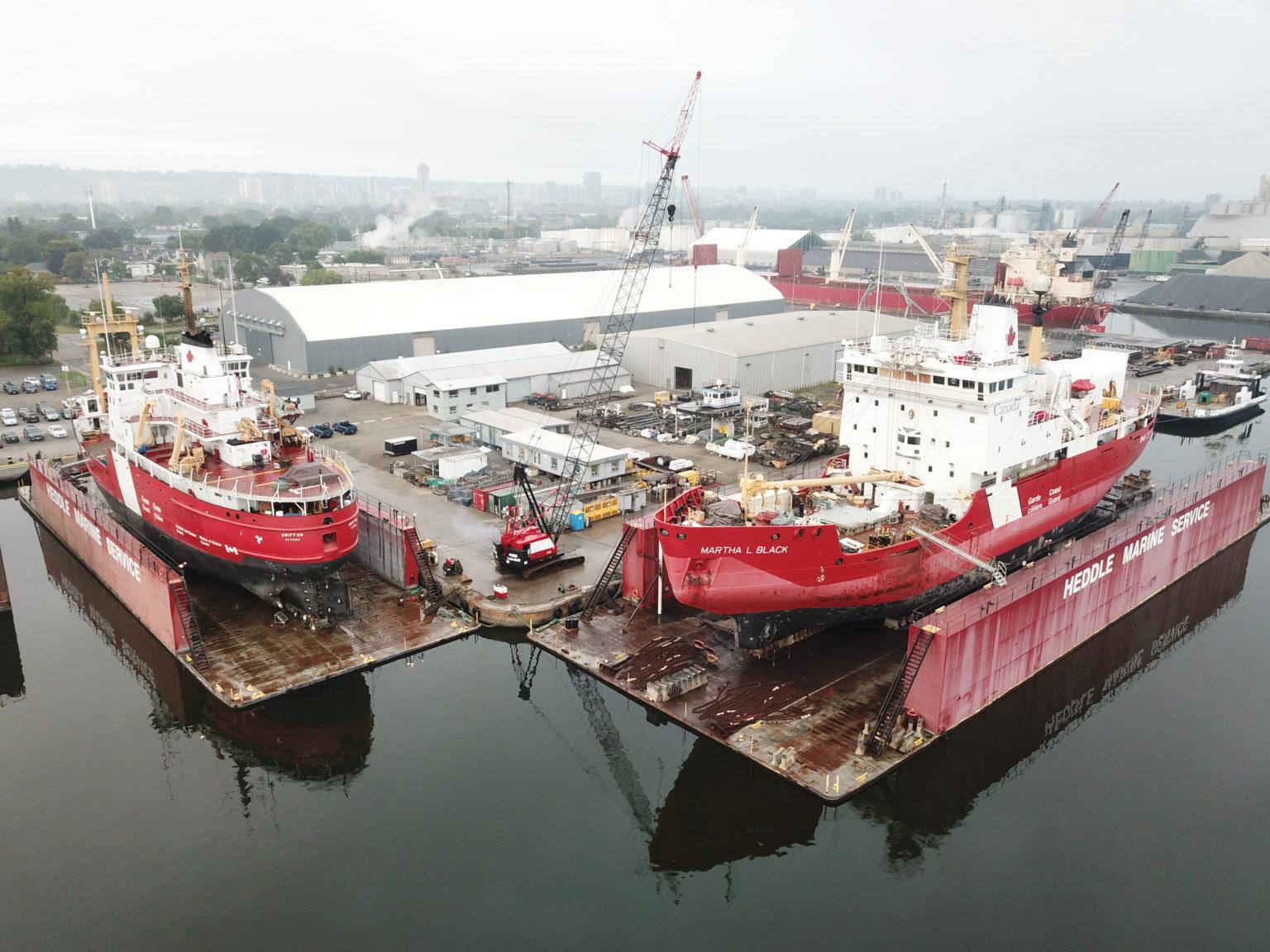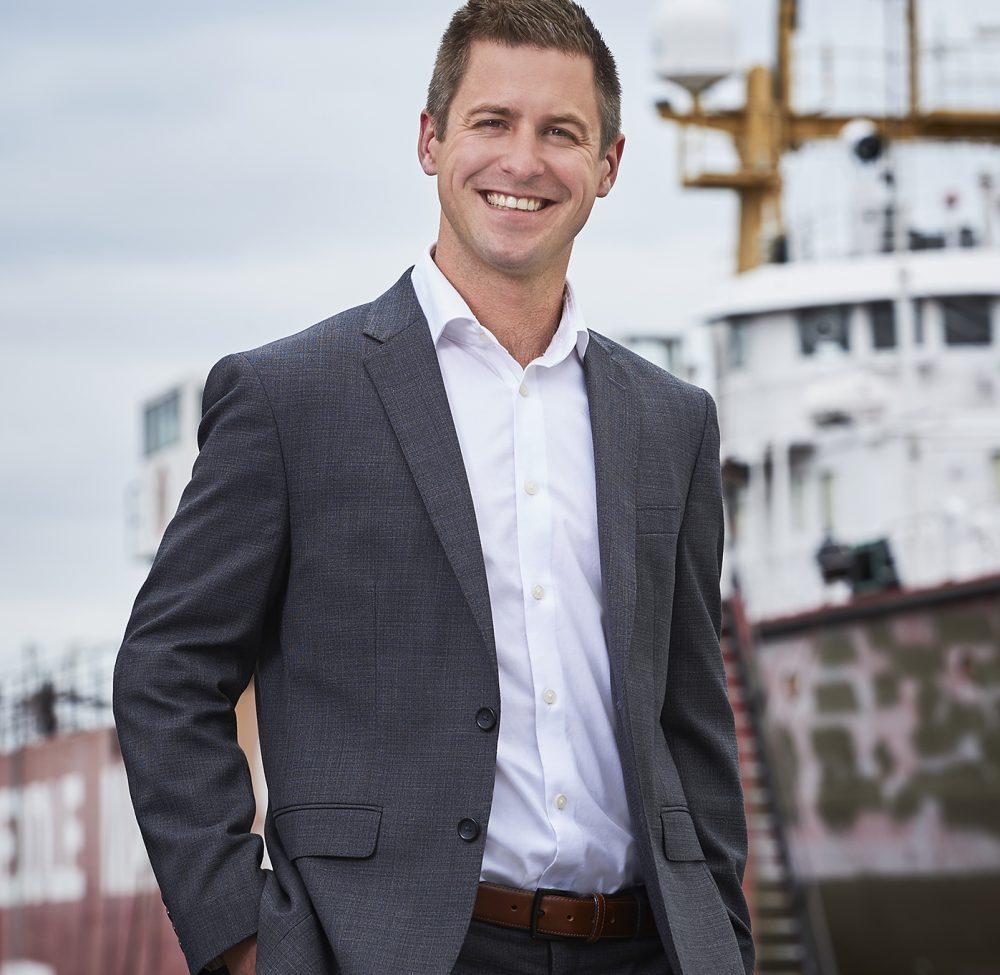
In an exclusive interview, Ted Kirkpatrick, Director of Business Development and Government Relations at Heddle Shipyards, comments on bringing back shipbuilding to Ontario, opportunities from the National Shipbuilding Strategy, meeting the challenges of skilled labour shortages and the top issues on his legislative wish list.
Based in Hamilton, Heddle Shipyards has in the past few years become a rising force in Canada’s shipbuilding and repair industry, today possessing the largest number of shipyards and drydocks. In an exclusive interview, Ted Kirkpatrick, director of business development and government relations, comments on bringing back shipbuilding to Ontario, opportunities from the National Shipbuilding Strategy, meeting the challenges of skilled labour shortages and the top issues on his legislative wishlist.

Ted Kirkpatrick, Director of Business Development and Government Relations, Heddle Shipyards.
Heddle Shipyards has provided shipbuilding and ship repair services for over 30 years. But in recent years the company has significantly expanded. What has driven this evolution?
The evolution was initially driven by recognizing an opportunity to expand our market through acquiring the Thunder Bay Shipyard and Port Weller Dry Docks. Until 2016, our operation was limited by our capacity in Hamilton. With the acquisition of Thunder Bay Shipyard in 2016 and the Port Weller Dry Docks in 2017, we acquired assets that can accommodate the largest vessels that transit the Seaway. This opened an entirely new market for us with respect to accommodating seaway max lakers and the larger Canadian Coast Guard and Royal Canadian Navy Ships.
We also saw an opportunity with the National Shipbuilding Strategy (NSS). We knew Hamilton alone would not be sufficient to execute our shipbuilding ambitions, so we had to expand our capabilities by acquiring more extensive ship repair and construction assets. The Port Weller Dry Docks was once Canada’s premier ship construction facility. We realized that Ontario had some unique assets that were vastly underutilized, so we embarked on a path to acquire them and bring them online to support the NSS.
For the uninitiated, tell us some of the tasks carried out in Heddle shipyards and what types of ships you service or build.
Heddle Shipyards is predominantly a vessel life cycle services provider. This means we do everything from constructing vessels to repairing, maintaining, and recycling them. Most of what we do is steelwork to ensure the integrity of the vessel’s hull and structure and mechanical work to ensure the vessel is operating smoothly. Any repair or construction project also requires various amounts of electrical, painting, and carpentry work, to name just a few activities.
We service everything from tugs, barges, ferries, tankers to seaway max cargo vessels and the Canadian Coast Guard fleet. As we grow, we will also be pursuing work for the Royal Canadian Navy.
We build workboats, tugs, barges, and passenger and vehicle ferries on the new build side. Our most recent new build projects were a self-propelled work barge, an ice-breaking hull for Exxon Mobile, and the conversion of a passenger and vehicle ferry for the Beausoleil First Nations community of Christian Island in Georgian Bay.
Bringing back shipbuilding to Ontario has been a major ambition for Heddle. How has the revival of this business impacted the economy of the province and those communities?
It largely remains an ambition at this point. While a project like the Simcoe Island Cable Ferry, awarded to Heddle last November, is significant and will support direct and indirect jobs, we have yet to land any significant shipbuilding work through the National Shipbuilding Strategy. Granted, the NSS has afforded us opportunities in the refit and vessel life extension space. Our partnership with Seaspan will further allow us to tap into the NSS; we are still working on bringing shipbuilding back to Ontario.
That being said, we are continuing to make headway and are executing larger and more complex projects all the time. There are several opportunities, such as the Toronto Ferries replacement program and the Canadian Coast Guard Vessels under 1000GT new build program. We feel like we are in a solid position to be the frontrunner for this work, and shipbuilding in Ontario is just around the corner.
Heddle has several agreements with Seaspan of Vancouver, including building modules for a future polar icebreaker and tertiary items for the Joint Support Ship program. How significant are these contracts in terms of keeping your shipyards busy in the coming years?
These contracts will significantly impact our ability to keep our shipyards busy in the coming years. In Ontario, we are still struggling with the boom-and-bust cycles the NSS was designed to alleviate. Without consistency of work, it is difficult to retain employees and attract new talent. Our agreements with Seaspan will be critical to having long-term, predictable work at the shipyards.
Our partnership with Seaspan will help strengthen our organization and build and maintain the capacity to take on additional maintenance work. We are incredibly grateful to have a partner like Seaspan, who is invested in our success and helping us become a stronger organization.
Heddle has been working with the Canadian Coast Guard for a number of years and most recently was awarded the contract for the vessel extension of the Canadian icebreaker CCGS Amundsen. Tell us more about the significance of this work.
The Canadian Coast Guard is one of our biggest clients. We have executed more than 70 dry dockings, alongside refits for the Canadian Coast Guard since 2012, so we consider ourselves a proud partner of the Canadian Coast Guard.
The CCGS Amundsen Vessel Life Extension (VLE) is significant for us and our Port Weller Dry Docks shipyard. The Amundsen VLE is a lengthy refit that will support upwards of one hundred direct jobs for approximately six months. These lengthy refit projects are critical for our ability to grow as a company. The biggest challenge we face is the cyclicality of our business and the inconsistency of work. We are typically extremely busy during the winter months and then struggle to find work during the summer. The continuity of work provided by the CCGS Amundsen and the Canadian Coast Guard Vessel Life Extension program gives us the certainty to hire and train new employees and continue investing in our people and our facilities.
What steps has Heddle been taking to render its shipyards more environmentally-friendly?
In 2021, Heddle Shipyards joined the Green Marine environmental certification program. That was a great step for us towards identifying areas where we can improve our environmental footprint and building policies and procedures to help achieve our environmental goals. This is an ongoing project, but we have made significant headway over the last couple of years.
Heddle recently won an Ontario government contract for a new Simcoe Island ferry that will be built in Hamilton. Does this represent promising new business for Heddle?
Absolutely. While we have built vessels in the past, one of our goals is to be Canada’s go-to shipyard for the vessels under 1000GT new build program. The Simcoe Island ferry new build will be a stepping stone towards that goal. It is also a great project for us as the build will continue through the spring and summer months. This will allow us to retain skilled trades jobs we might otherwise lose during a typically slow part of the year.
We are very grateful to the Ontario government for the opportunity to build the Simcoe Island Ferry and their commitment to shipbuilding in Ontario.
Finding enough skilled labour has been a rising challenge in the global maritime industry. How is Heddle meeting this challenge, given the special skills involved in the shipbuilding and ship repair industry?
Our workforce has certainly increased, although we still face the same challenges with skilled labour as many other industries in Canada. Meeting this challenge is two-fold. As I have mentioned, consistency of work is the key to attracting and retaining skilled people. If you can only offer three or four months’ work at a time, it is challenging to attract the best and brightest.
The second part of addressing this challenge is training and awareness There is a unique set of skills involved in the shipbuilding and repair industry. When the shipbuilding industry in Ontario collapsed in the late 1980s and early 1990s, we lost a tremendous amount of knowledge and experience. In Canada, re-building the shipbuilding industry is not just about re-building shipyards; it is about re-building the human resources required to support it. At Heddle, similar to other Canadian shipyards, we must rebuild that knowledge base. Part of that happens with on-the-job training and re-training people from different industries.
The other side of the equation is awareness. We must make high school, elementary school students, and their parents aware that the shipbuilding industry is viable and working in shipbuilding is a promising career path. This goes for any advanced manufacturing or skilled trades industry in Canada. There is an acute shortage of skilled tradespeople in this country, and it starts with awareness at the elementary and high school levels.
On shipbuilding policies and issues, what are the most pressing matters on your legislative wish list both in Ontario and federally?
Provincially, there has been a recognition by the current administration of the importance shipbuilding has in Ontario, and projects like the Simcoe Island Ferry being built in Ontario shipyards, are a testament to that. However, there is also a recognition that Ontario is at a competitive disadvantage with other provinces and jurisdictions. Other provinces have policies and financial mechanisms that incentivize work in their regions. Ontario needs to be on a level playing field with other provinces to compete for some of the major shipbuilding contracts coming out of the NSS. Based on the current government’s commitment to shipbuilding and advanced manufacturing, I believe we are on a path towards that level playing field.
Federally, we would like to see a shift in how tenders are evaluated. The current model is based on the lowest price wins. This is problematic for two reasons. One, it creates a race to the bottom. Shipyards look to purchase the cheapest equipment and material to keep the costs down. The quality of the equipment or standard equipment across the fleet is not factored into the evaluation. This doesn’t always translate into the best value for Canada.
Secondly, there is no consideration for a shipyard’s past performance or capacity to execute the work. Shipyards can bid on projects knowing they will have issues meeting the schedule or have difficulties completing the work. There is currently no mechanism to assess criteria such as capacity, adherence to schedule, or past performance, which does not translate into the best value for Canada. Ideally, we would see a shift from the lowest bid to a weighted criteria model where factors other than just price are evaluated.